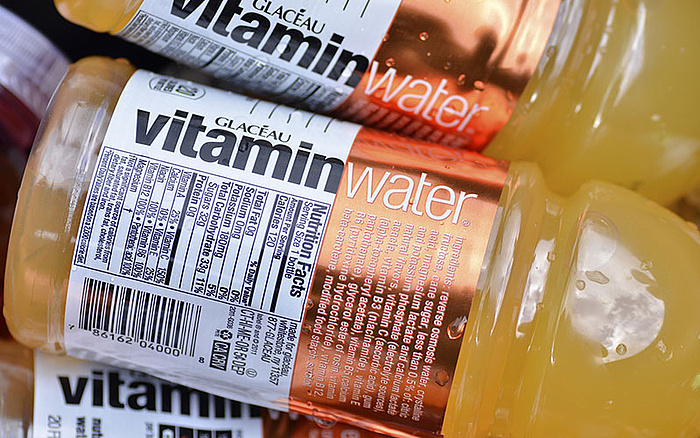
The seven deadly sins of trademark filing
If you want to run a business successfully, you need to brand your products and services. Of course, it is easy to say that the solution is to obtain trademark protection — but how do you do it, and what dangerous obstacles may lead you away from the path?
For the purposes of identifying the "seven deadly sins of trademark filing," we will investigate the procedure to obtain the trademark right by filing a formal application with any industrial property office; along the way, we will explore pitfalls in this quest.
First thoughts
Before you file for trademark registration, ascertain that you need a trademark and that it will be a valuable asset for your business. Next, define your trademark so that customers can identify your products and services and distinguish them from those of your competitors. After that, reflect on where you intend to employ your prospective mark. Depending on the jurisdiction, the acquisition of the trademark right might depend either on first-to-use or first-to-file, so it is necessary to be mindful of the difference.
The first-to-use trademark system, followed by countries such as the U.S., Canada and the Philippines, provides trademark rights to the first users in commerce, including priority over others in their geographical territories where the marks were used in commerce. Meanwhile, under the first-to-file trademark system followed by most jurisdictions, such as the European Union and China, applicants that are first to apply for registration of their marks are assigned trademark rights and priority, irrespective of whether the applicants have used the marks in commerce or whether the marks were used in commerce by others first.
The how-tos of initiating the use of a mark in commerce are a topic for another article, so we will proceed under the assumption that this has been achieved or does not apply for registration.
Improper search for existing conflicting marks
To understand our first deadly sin, it is crucial to appreciate one simple fact: Searching is essential. You need to know if your mark is already registered and if any earlier rights conflict with yours.
Not conducting a proper search is risky in two ways. One is that you might have to rebrand and choose a new trademark, which can be very costly. The second risk is that by commencing use, you might infringe on other trademarks owned by third parties. Where a product is exported to multiple jurisdictions, a trademark may be available in some but not all jurisdictions where sales are intended. It can be costly to launch a product in different jurisdictions under different brand names simply because of conflicting earlier rights. The lesson is to coordinate the brand strategy at the root of the product launch.

After carrying out a thorough search of trademark registries, it is best to have the findings interpreted by a trademark attorney, who will have the expertise to identify if and where there are any risks.
Of course, searching is not your only responsibility when applying for and using trademark rights. It is equally important to understand the implications of the trademark itself.
Filed a descriptive mark
Why is this a deadly sin? To understand, we must first analyze the nature and types of trademark rights. A trademark may consist of all signs, particularly words, including personal names, designs, letters, numerals, sounds, three-dimensional designs, the shape of goods or of their packaging and other wrapping, including colors and color combinations.
These signs may be protected as trademarks if they are capable of distinguishing the goods or services of one undertaking from those of other undertakings.
Not so long ago, the European Union abolished the requirement of graphical representation for non-traditional trademarks – basically for any trademark that is not a word, a figurative or a combination of a word and figurative. As such, you have a lot of kinds of trademarks – many options at your disposal. But no matter whether you have chosen a three-dimensional shape mark or a word mark, the relevant industrial property office will examine your trademark as to descriptiveness and distinctiveness, which comprise absolute grounds. Some offices also examine relative grounds, but earlier rights are mostly a matter of the opposition procedure.
Descriptive marks are those marks that only describe the products or services to which they are applied. A typical example is the trademark "Coffee" for the commercial good that is coffee. This is merely descriptive and does not distinguish the source. Obtaining registration and enforcement can be challenging if the trademark is too descriptive. Even so, some successful brands are fairly descriptive, but choosing such a trademark requires much more clearance and a focused marketing strategy.
A descriptive trademark can become distinctive through use, provided that the trademark is not exclusively descriptive. VITAMIN WATER is an example of a successful descriptive trademark that became very distinctive due to a heavy investment in marketing by Coca-Cola. The same approach is not recommended for startups with a smaller budget.

Knowingly deploying a descriptive trademark in the hope of acquiring distinctiveness and attaining registration at a later date is a bold and precarious IP strategy. (Image source: iStock. Credit: bgwalker)
Ultimately, descriptive trademarks are only a "deadly sin" when you try to use them for the wrong purpose or expect different protections. However, when used improperly, they do have the potential to cause serious problems.
This is just one example of how a well-meaning decision can become a perilous mistake. The same is true of many other steps in the application process — even just writing out the applicant's proper name.
Filed by the wrong applicant
Due to the wording of various trademark laws, this problem cannot be easily remedied. At the time of filing, the applicant in many jurisdictions must:
- Be the bona fide proprietor of the trademark
- Have the intention to use the trademark themselves or through a licensee
As Christophe Van Zyl points out, "If, for example, a multinational company files a trademark in the name of its local subsidiary in South Africa, the application would arguably be contrary to sections 10(3) [not the bona fide proprietor] and 10(4) [no intention to use the trademark himself or through a permitted person] of the South African Trademarks Act. Assigning the trademark to the correct proprietor will arguably not rectify the problem that the application was 'rotten' on the filing date."
The situation is similar in the U.S. "The assignment of an intent-to-use application to someone who is not the successor to the applicant's business before filing an allegation of use renders the application void, and any resulting registration must be cancelled." [Emphasis added; also see: Central Garden & Pet Company vs. Doskocil Manufacturing Company, Inc.]
Part of Amazon Techs., Inc. v. Wax was about the missing intent-to-use of the remaining co-applicant. In a non-final ruling, the Trademark Trial and Appeal Board found that Section 10 of the U.S. Trademarks Act had not been violated by the assignment from one co-applicant to the other based on its definition of an assignment as a transfer or making over to another the whole of any property. In this case, there was no transfer to "another" because the co-applicant assignee was an original joint applicant and, later, the sole remaining applicant.
The takeaway for applicants is simple: Double-check all information you provide, particularly names. Unfortunately, even one wrong detail can lead to confusion, as we see again in our fourth deadly sin.
Improper classification
There are many risks concerning classification, which is why this step can quickly become a deadly sin.
Firstly, filing for the class heading but not for specific goods means the latter will not be covered. An application for registration that does not make it possible, by only using a particular class heading of the Nice Classification, to establish whether the applicant intends to cover all or only some of the goods in that class cannot be considered sufficiently clear and precise.

A catch-all approach to classifying goods and services is inappropriate for trademark registration. It is essential to plan exactly how and for what a trademark will be used before applying.
In the "IP Translator" decision, the European Court of Justice drew the following conclusions:
- Item 49: "Accordingly, Directive 2008/95 requires the goods and services for which the protection of the trade mark is sought to be identified by the applicant with sufficient clarity and precision to enable the competent authorities and economic operators, on that basis alone, to determine the extent of the protection sought." [Emphasis added]
- Item 56: "Accordingly, Directive 2008/95 does not preclude the use of the general indications of the class headings of the Nice Classification to identify the goods and services for which the protection of the trade mark is sought, provided that such identification is sufficiently clear and precise to allow the competent authorities and economic operators to determine the scope of the protection sought."
- Item 61: "Accordingly, in order to respect the requirements of clarity and precision mentioned above, an applicant for a national trade mark who uses all the general indications of a particular class heading of the Nice Classification to identify the goods or services for which the protection of the trade mark is sought must specify whether its application for registration is intended to cover all the goods or services included in the alphabetical list of the particular class concerned or only some of those goods or services. If the application concerns only some of those goods or services, the applicant is required to specify which of the goods or services in that class are intended to be covered."
The second element of this deadly sin regards amendments. These are permitted, but generally, one can only restrict the classes of goods / services, as one cannot expand the scope of an application to be broader than what was applied for on the filing date.
Under Article 49(2) of the European Union Trade Mark Regulation, amendments to the indication of goods and services before registration can also be seen as a fine-tuning of the list of goods and services and, therefore, can change the application's wording without necessarily limiting its scope or changing the nature of the goods and services. However, any such fine-tuning may never broaden the scope of the application.
Restrictions made post-registration must comply with the requirements of Article 57 EUTMR on partial surrender. Once the mark has been entered in the Register, changes to the list of goods and services can only seek to limit the scope of protection and will be refused if no actual restriction is made. Under no circumstances may the change widen the list of goods and services.

In order to broaden the goods or services associated with a mark, it is necessary to file a new application. This is another reason trademarks need to be considered early in product development.
Example: If one files in class 32 for "alcoholic beverages, excluding beers," one cannot later delete "excluding beers" as doing so would broaden the application to cover beers when this previously was not the case.
The final element of this deadly sin is misunderstanding the proper goods / services for which the trademark will be used.
Typically, container / shape marks are problematic. If one files the shape of a beer bottle as a trademark, the correct class to file the shape is class 32 for beers and not class 16 (containers for goods). Why? Because a beer company does not sell bottles, it sells beers. Therefore, the shape of the bottle must be filed for beers and not containers.
Despite the complexity of this and the previous deadly sins, it is certainly possible to get trademark details right. However, an applicant's responsibilities do not end there; timing is the next and equally challenging step.
Failed to respond before deadlines
The IP office concerned shall examine the trademark and the conditions of filing. Yet it is crucial for applicants to pay attention to any deadlines. In Germany, for example, if deficiencies are not remedied within the specified term, the trademark application is deemed to be withdrawn. If the deficiencies ascertained are remedied within that period, the date on which the deficiencies were remedied shall be accorded as the date of filing.
The German Trademarks Act provides for further treatment of the application and for reestablishing rights. The provision on further processing of the application says:
"Where the trade mark application has been refused upon failure to comply with a time limit set by the German Patent and Trade Mark Office, the decision shall become ineffective without the need for its express annulment if the applicant requests further processing of the application and completes the omitted act."
Deadlines are not usually fatal but can be in some jurisdictions, and the costs of rights' reinstatement or restoration can be very high.
When it comes to the sins of trademark applications, the "deadliness" is truly in the details. This is particularly true where other parties are involved.
Missed filing a defense based on non-use during opposition
As an applicant, you must be aware that there are observers and opponents. Luckily, they can only appear if the law provides for their rights to observe and to oppose. While observations fit neatly in the drawer of general legal opinions by probable competitors, the opposition is a serious matter and requires the utmost diligence.

A successful opposition will cause an application to be refused partially or fully, depending on the Nice Classifications in dispute. Such a result can blow a hole in a commercial project and solidify competitors.
Opposition can occur before or after the trademark application has been registered. The object of the opposition is that the opponent claims to have an earlier trademark right that is 1) similar or confusingly similar and 2) has similar or confusingly similar goods or services protected for their earlier right. They are required to use the mark as it is for any other trademark holder. So, in the opposition procedure, the applicant should not omit to question the use of the earlier trademark right, provided that the non-use grace period has expired. Not filing the non-use counterattack can be a big mistake.
Another big mistake is filing a counterattack without setting out appropriate evidence. The onus of proof is usually on the trademark owner, but this does not mean that simply making a bald allegation of non-use is enough. Why? If the trademark owner makes a statement that the trademark is in use and provides some basis for this, the evidence will be in favor of the trademark owner.
This deadly sin is perhaps one of the most serious, as it exposes your company to a variety of advanced legal allegations and risks. Unfortunately, it leads directly into the seventh and final deadly sin – a failure to get help.
No legal advice prior to filing
An attorney will not only be helpful in the search for prior rights but will also be able to advise on the question of descriptiveness and distinctiveness. Most importantly, they will evaluate whether your trademark is similar to earlier rights or whether the goods / services you intend to protect are similar or confusingly similar to earlier rights.
Although there are additional challenges and obstacles in filing a trademark application, the seven deadly sins we have covered here are worthy of particular attention. Fortunately, addressing the seventh will make the previous six far more manageable.
The author wishes to acknowledge the special contribution made by Christophe van Zyl.
Filed in

Learn why brand name and trademark law matter for your business, from marketing efforts to bottom lines.



